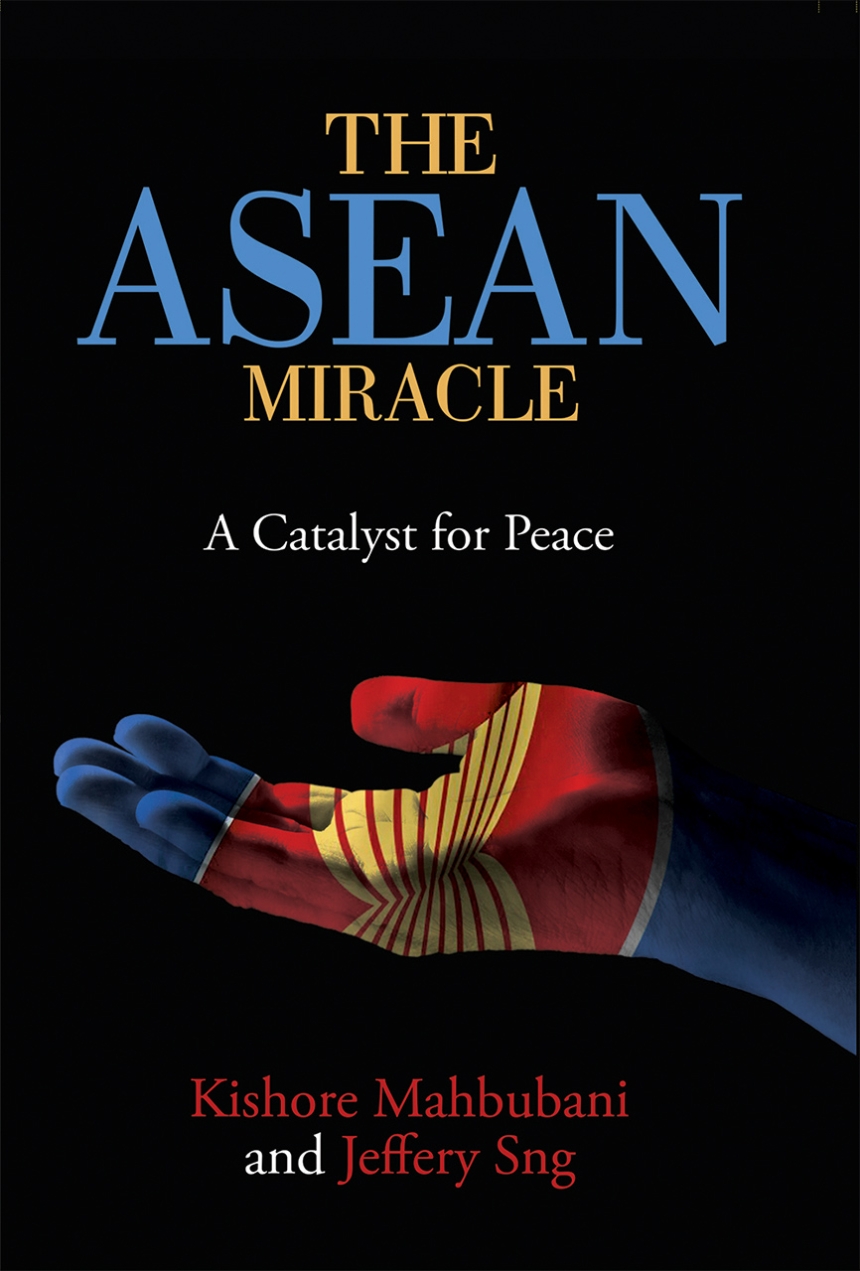9789814722490
9789814722650
The Association of Southeast Asian Nations (ASEAN) is a miracle. In an era of growing cultural pessimism, there is a pervasive belief that different civilizations cannot function together. Yet the ten countries of ASEAN are a thriving counter-example of coexistence. Here, more than 625 million people live together in peace.
In 1967, leaders from Indonesia, Malaysia, the Philippines, Singapore, and Thailand struck a landmark agreement, forming ASEAN. They had realized that political and economic cooperation would bring greater stability and prosperity to the region. Fifty years and five additional countries later, the alliance has remained one of the world’s most successful collaborations. Kishore Mahbubani and Jeffery Sng explain how this partnership has benefited the ten member countries and why it should serve as a model for other regions of the world, challenging our assumptions about international cooperation. As the world turns to Asia and the United States and China jostle for dominance, the ASEAN region will have an undeniably powerful role in shaping our global systems. Mahbubani and Sng offer an important primer for understanding this immensely successful—and woefully underappreciated—regional organization.
In 1967, leaders from Indonesia, Malaysia, the Philippines, Singapore, and Thailand struck a landmark agreement, forming ASEAN. They had realized that political and economic cooperation would bring greater stability and prosperity to the region. Fifty years and five additional countries later, the alliance has remained one of the world’s most successful collaborations. Kishore Mahbubani and Jeffery Sng explain how this partnership has benefited the ten member countries and why it should serve as a model for other regions of the world, challenging our assumptions about international cooperation. As the world turns to Asia and the United States and China jostle for dominance, the ASEAN region will have an undeniably powerful role in shaping our global systems. Mahbubani and Sng offer an important primer for understanding this immensely successful—and woefully underappreciated—regional organization.
286 pages | 3 maps | 6 x 9 | © 2017
Asian Studies: Southeast Asia and Australia
Economics and Business: Economics--International and Comparative
History: Asian History
Political Science: Diplomacy, Foreign Policy, and International Relations
Reviews
Table of Contents
Acknowledgements
Preface
Introduction
1. The Four Waves
The Indian Wave
The Chinese Wave
The Muslim Wave
The Western Wave
2. The ASEAN Ecosystem of Peace
First Factor: The Fear of Communism
Second Factor: The Role of Strong Leaders
Third Factor: Geopolitical Luck
Fourth Factor: Market-Oriented Economic Policies
Fifth Factor: ASEAN-Based Regional Networks
3. ASEAN and the Great Powers
ASEAN and America
ASEAN and China
ASEAN and the EU
ASEAN and India
ASEAN and Japan
4. Pen Sketches
Brunei
Cambodia
Indonesia
Laos
Malaysia
Myanmar
The Philippines
Singapore
Thailand
Vietnam
5. ASEAN: Strengths and Weaknesses
Strengths
Weaknesses
Threats
Opportunities
Conclusion
6. ASEAN’s Peace Prize
Three Bold Recommendations
Bibliography
Index
Preface
Introduction
1. The Four Waves
The Indian Wave
The Chinese Wave
The Muslim Wave
The Western Wave
2. The ASEAN Ecosystem of Peace
First Factor: The Fear of Communism
Second Factor: The Role of Strong Leaders
Third Factor: Geopolitical Luck
Fourth Factor: Market-Oriented Economic Policies
Fifth Factor: ASEAN-Based Regional Networks
3. ASEAN and the Great Powers
ASEAN and America
ASEAN and China
ASEAN and the EU
ASEAN and India
ASEAN and Japan
4. Pen Sketches
Brunei
Cambodia
Indonesia
Laos
Malaysia
Myanmar
The Philippines
Singapore
Thailand
Vietnam
5. ASEAN: Strengths and Weaknesses
Strengths
Weaknesses
Threats
Opportunities
Conclusion
6. ASEAN’s Peace Prize
Three Bold Recommendations
Bibliography
Index

